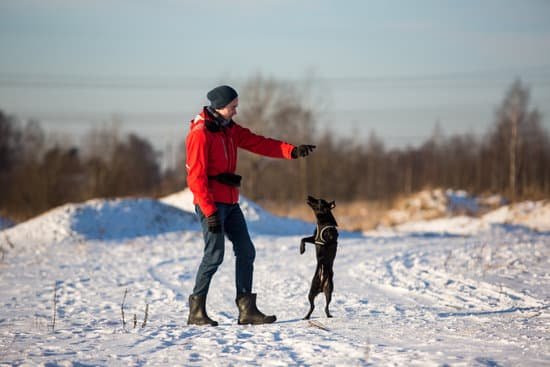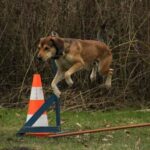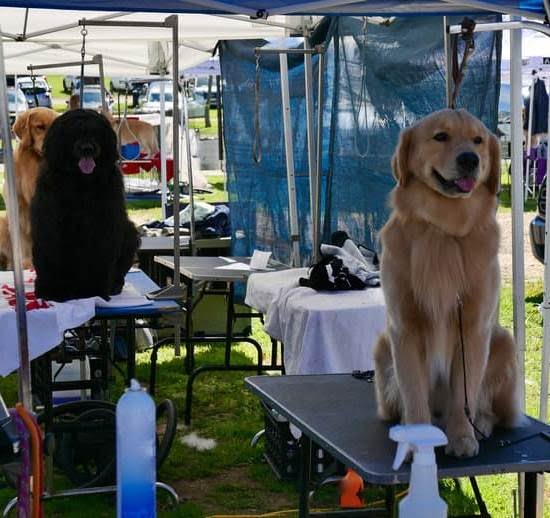Are you interested in learning how to start training a dog for search and rescue? Search and rescue dog training is an incredibly important and rewarding endeavor.
Dogs trained for search and rescue play a crucial role in locating missing persons, whether lost hikers, children, or individuals affected by natural disasters. In this article, we will explore the steps and techniques involved in training a dog for search and rescue, from understanding the characteristics of a great search and rescue dog to utilizing positive reinforcement and encouragement in their training.
Training a dog for search and rescue requires specific characteristics, skills, and abilities that not all dogs possess. It is essential to understand what makes a great search and rescue dog before diving into the training process. Basic obedience training is the foundation for any successful search and rescue dog. Building on this foundation involves introducing scent training, physical fitness, exposure to various scenarios, advanced techniques, handler involvement, consistency, patience, as well as utilizing positive reinforcement.
To successfully train a dog for search and rescue, it’s vital to have a comprehensive understanding of each aspect of their training process. We will explore each step in detail to equip you with the knowledge necessary to embark on this journey effectively.
Whether you’re an experienced handler looking to train a new canine partner or someone interested in learning more about this fascinating field of work with dogs, this article will provide valuable insights into getting started with search and rescue dog training.
Understanding the Characteristics of a Great Search and Rescue Dog
Search and rescue (SAR) dogs play a crucial role in locating missing persons, whether they are lost hikers, disaster survivors, or individuals with cognitive impairments who have wandered away from home. The success of SAR operations heavily depends on the characteristics of the dogs involved.
One of the most important attributes of a successful search and rescue dog is their strong sense of smell. Dogs have an olfactory sense that is far superior to humans, making them invaluable in detecting scents even in complex environments.
Another key characteristic of a great search and rescue dog is their temperament. They need to be friendly and sociable with strangers, as they will often be working alongside different handlers and team members during SAR operations. Additionally, these dogs must possess a high level of energy and drive to work for extended periods in challenging terrains.
Furthermore, it is essential for SAR dogs to have great problem-solving skills. They should be able to navigate through obstacles independently while maintaining focus on searching for scents. A combination of intelligence, athleticism, and resilience is necessary for a search and rescue dog to excel in their role.
| Search & Rescue Dog Characteristics | Description |
|---|---|
| Sense of Smell | Strong olfactory sense crucial for detecting scents in various environments. |
| Temperament | Friendly and sociable with strangers while possessing high energy levels. |
| Problem-Solving Skills | Ability to navigate obstacles independently while staying focused on the task at hand. |
Basic Obedience Training for Search and Rescue Dogs
When it comes to training a search and rescue dog, basic obedience is the foundation for all other advanced training techniques. A well-behaved dog is easier to handle in various search scenarios and can follow commands effectively. Here are some key aspects of basic obedience training for search and rescue dogs:
- Focus on essential commands: Start with teaching your dog basic commands such as sit, stay, come, and heel. These commands lay the groundwork for more advanced training.
- Use positive reinforcement: Rewarding your dog with treats or praise when they successfully follow a command helps to reinforce good behavior and encourages them to obey consistently.
- Consistency in training: Regular, consistent training sessions are important to ensure that your dog remembers and obeys the commands they have been taught. Set aside time for daily obedience training exercises with your search and rescue dog.
In addition to these fundamental obedience training techniques, it’s important to remember that every search and rescue dog will progress at their own pace. Some dogs may pick up on commands quickly, while others may require more time and patience. Regardless, basic obedience lays the groundwork for future success in search and rescue scenarios.
Overall, basic obedience training is an essential part of preparing a dog for search and rescue work. By establishing a strong foundation of good behavior and command-following skills, you can set your canine companion up for success in more advanced training techniques as they progress towards becoming a proficient search and rescue dog.
Introducing Scent Training for Search and Rescue Dogs
Understanding the Importance of Scent Training
Scent training is a crucial aspect of search and rescue dog training as it harnesses the natural abilities of dogs to track scents. Dogs have an incredible sense of smell, which makes them valuable assets in locating missing persons or even those trapped in natural disasters. Introducing scent training at an early stage is essential to develop and strengthen this innate ability.
Basic Scent Training Techniques
The first step in scent training for search and rescue dogs is to introduce them to different scents. This can be done by using scent boxes or containers with specific scents such as human scent, animal scent, or even specific articles of clothing. The dog should be encouraged to sniff these scents and associate them with rewards, creating a positive reinforcement for successful scent tracking.
Once the dog becomes familiar with different scents, they can progress to more advanced scent tracking exercises. This may involve laying a trail for the dog to follow or hiding scented objects for the dog to locate. As the dog becomes more proficient in tracking scents, the difficulty of the exercises can be increased to simulate real-life search and rescue scenarios.
Utilizing Positive Reinforcement in Scent Training
Positive reinforcement is crucial when introducing scent training to search and rescue dogs. Rewards such as treats, praise, or playtime should be given when the dog successfully identifies and tracks a scent. This creates a strong association between finding scents and receiving rewards, making the training process enjoyable for the dog. Consistent positive reinforcement will motivate the dog to perform well in actual search and rescue missions.
Building Physical Fitness and Endurance for Search and Rescue Dogs
A crucial aspect of training search and rescue dogs is building their physical fitness and endurance. These dogs need to be in top shape in order to effectively perform their duties, which often involve navigating difficult terrain and working for extended periods of time. It is important to note that not all dog breeds are suited for search and rescue work, so it is essential to understand the specific physical characteristics required for this type of training.
To build physical fitness and endurance, it is recommended to start with regular exercise routines that include activities such as running, swimming, hiking, and agility training. These exercises help improve a dog’s strength, stamina, and overall conditioning. Additionally, incorporating mental stimulation exercises such as scent detection games or obstacle courses can also contribute to a dog’s overall fitness level.
In addition to regular exercise, proper nutrition is essential in maintaining a search and rescue dog’s physical health. A balanced diet that includes high-quality protein sources, healthy fats, and essential vitamins and minerals is crucial for supporting muscle development, energy levels, and overall well-being. Consulting a veterinarian or a professional trainer can provide valuable guidance on the specific nutritional needs of search and rescue dogs.
| Physical Fitness Activities | Proper Nutrition |
|---|---|
| Running | High-quality protein sources |
| Swimming | Healthy fats |
| Hiking | Essential vitamins and minerals |
Exposure to Various Search and Rescue Scenarios
Once your search and rescue dog has mastered basic obedience and scent training, it is crucial to expose them to various search and rescue scenarios to prepare them for real-life situations. Here are some key scenarios to incorporate into your training regimen:
- Urban Search: Train your dog to navigate through urban environments such as streets, buildings, and vehicles in search of missing persons. This will help them become comfortable working in crowded and noisy locations.
- Wilderness Search: Practice guiding your dog through wooded areas, rough terrain, and natural obstacles to simulate the conditions they may encounter during wilderness search and rescue missions.
- Water Search: Introduce your canine companion to bodies of water such as lakes, rivers, and ponds to develop their ability to locate individuals in aquatic environments.
- Disaster Response: Prepare your dog for disaster scenarios by exposing them to simulated earthquakes, collapsed structures, and other catastrophic events. This will help them acclimate to challenging conditions commonly encountered during disaster response operations.
By gradually introducing these various search and rescue scenarios into your training sessions, you can ensure that your dog is well-prepared for the diverse challenges they may face while on duty. It is important to provide a positive and supportive environment as you expose your dog to these scenarios, helping build their confidence and resilience in the face of adversity.
Advanced Training Techniques for Search and Rescue Dogs
Advanced Scent Discrimination
Once your dog has mastered basic scent training, it’s time to move on to advanced scent discrimination. This involves introducing multiple scents and teaching the dog to identify and differentiate between them. Advanced scent discrimination is crucial for search and rescue dogs, as they need to be able to focus on specific scents in complex environments.
Off-Leash Training
One of the most important skills for a search and rescue dog is being able to work off-leash. Advanced training techniques involve teaching the dog to work independently while remaining focused on their task. This level of freedom allows the dog to navigate difficult terrain and cover large areas more effectively.
Nighttime and Adverse Condition Training
It’s essential for search and rescue dogs to be comfortable working in various conditions, including at night or during inclement weather. Advanced training techniques should include exposure to these adverse conditions so that the dog remains confident and effective regardless of the circumstances.
By implementing these advanced training techniques, handlers can ensure that their search and rescue dogs are prepared for any situation they may encounter during a mission. These methods require patience, consistency, and dedication, but they are crucial for developing highly skilled search and rescue teams.
The Role of the Handler in Search and Rescue Training
As a search and rescue dog handler, your role is crucial in the training process. You are responsible for developing a strong and trusting bond with your canine partner, as well as guiding them through the various training exercises. One of the most important aspects of being a handler is understanding the unique characteristics and behavior of your dog, and adapting your training techniques to suit their individual needs.
In addition to understanding your dog, you must also possess a thorough knowledge of search and rescue techniques and protocols. This includes learning how to effectively communicate with other team members, understanding search strategies, and being prepared for any potential challenges or obstacles that may arise during a mission. As a handler, it is your responsibility to ensure that both you and your dog are well-prepared for any situation that may arise during a search and rescue operation.
Furthermore, the role of the handler extends beyond just training the dog. It also involves maintaining the health, wellbeing, and overall fitness of the canine partner. This includes regular exercise, grooming, veterinary care, and nutrition. In order to be effective in search and rescue operations, it is important for handlers to prioritize their dog’s physical health and provide them with proper care and attention throughout their training journey.
The Importance of Consistency and Patience in Training a Search and Rescue Dog
Training a search and rescue dog requires a significant amount of patience and consistency from the handler. These dogs are often put in high-stress situations and need to be able to rely on their training and their handler’s guidance. Consistency is key in reinforcing the desired behaviors and building trust between the dog and handler.
Consistency in training means that the commands, rewards, and expectations remain the same no matter the environment or situation. This helps the dog understand what is expected of them at all times, whether they are searching for someone in a forest or an urban area. It also builds confidence in the dog, as they know what is expected of them and how to respond.
Patience is equally important in training a search and rescue dog. Each dog learns at its own pace, so it’s essential for handlers to remain patient throughout the training process.
Dogs may not always understand commands right away or may struggle with certain aspects of training, so patience is crucial in helping them work through these challenges. Additionally, search and rescue scenarios can be intense, requiring dogs to focus for extended periods, so patience plays a vital role in helping them develop this level of concentration.
Utilizing Positive Reinforcement and Encouragement in Search and Rescue Training
In conclusion, training a dog for search and rescue is a time-consuming and rigorous process that requires dedication, patience, and consistent effort from both the handler and the dog. Positive reinforcement and encouragement play a vital role in shaping the behavior and performance of search and rescue dogs. By using rewards, praises, and other forms of positive reinforcement, handlers can effectively motivate their dogs to continue performing at their best.
Positive reinforcement not only helps in building a strong bond between the handler and the dog but also fosters a positive learning environment. Dogs respond well to praise, treats, or toys as rewards for exhibiting the desired behaviors during training. This method of training not only increases the dog’s motivation to perform well but also creates a sense of enjoyment in learning new skills.
Ultimately, utilizing positive reinforcement in search and rescue training is crucial for nurturing a confident, focused, and resilient search and rescue dog. It is important for handlers to recognize and appreciate their dog’s efforts during training by providing them with positive feedback and rewards. With patience, consistency, and positive reinforcement, handlers can successfully train their dogs to become valuable assets in search and rescue missions.
Frequently Asked Questions
Can My Dog Be Trained as a Search and Rescue Dog?
Many dogs can be trained as search and rescue dogs, but it ultimately depends on the individual dog’s temperament, drive, and physical abilities. Breeds commonly used for search and rescue work include German Shepherds, Labrador Retrievers, Border Collies, and Belgian Malinois. However, mixed-breed dogs with the right characteristics can also excel in this type of training.
What Is the Easiest Dog to Train for Search and Rescue?
There isn’t necessarily one specific “easiest” dog to train for search and rescue, as different breeds have different strengths and weaknesses. That being said, Labrador Retrievers are often considered to be relatively easy to train due to their high intelligence, willingness to learn, and strong work ethic.
Their friendly disposition also makes them well-suited for the potentially stressful situations that may arise during search and rescue operations.
How Do I Teach My Dog to Search and Find?
Teaching a dog to search and find involves utilizing their natural instincts while also providing structured training. One common method is to use positive reinforcement techniques such as clicker training or treats to encourage the dog to use their nose to locate a specific scent.
This process typically involves gradually increasing the difficulty of the searches, establishing a clear command for initiating the search, and ensuring that the dog receives plenty of practice opportunities in various environments. Consistency, patience, and a strong bond between handler and dog are key elements in successfully teaching a dog how to effectively search and find.

Welcome to the blog! I am a professional dog trainer and have been working with dogs for many years. In this blog, I will be discussing various topics related to dog training, including tips, tricks, and advice. I hope you find this information helpful and informative. Thanks for reading!





